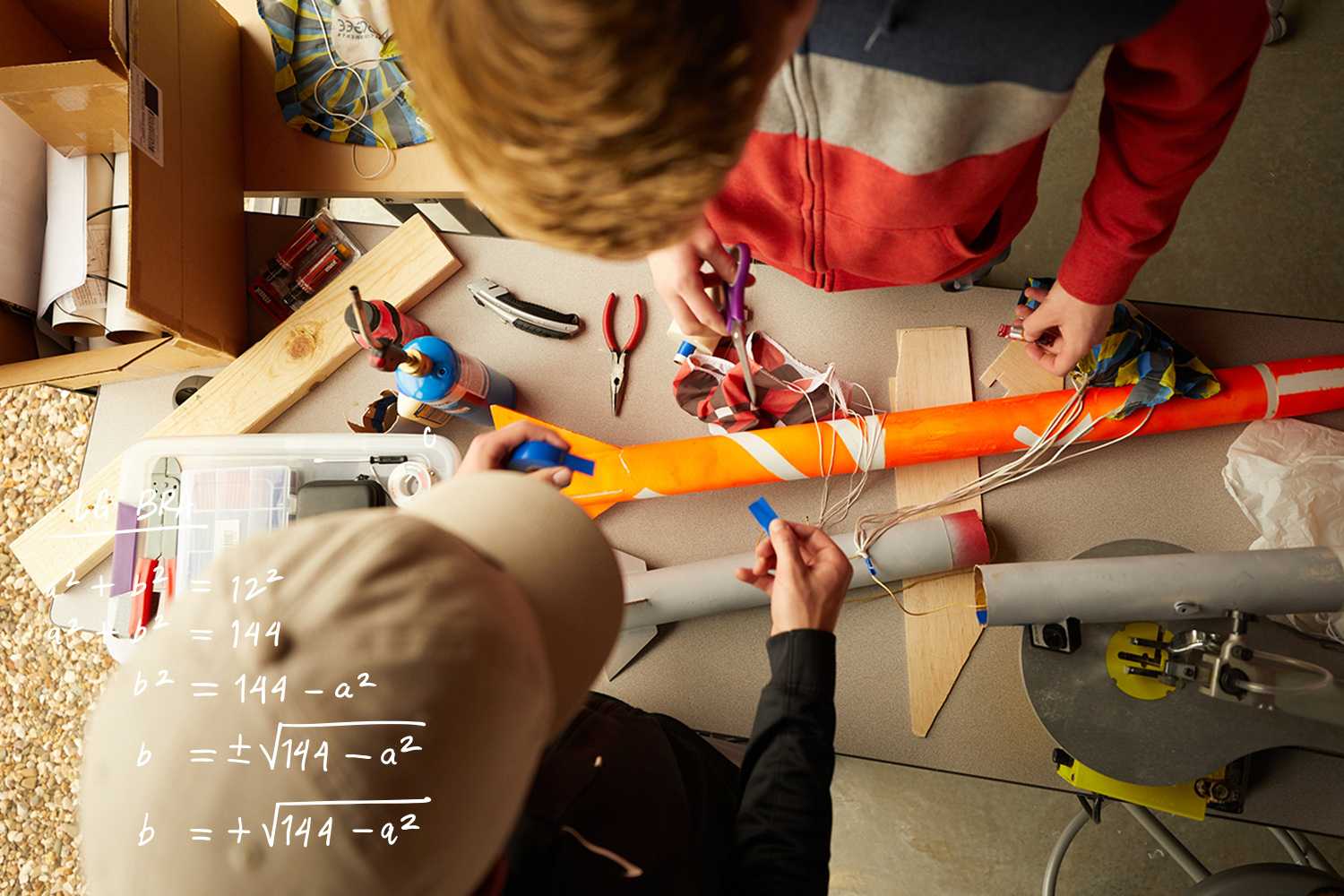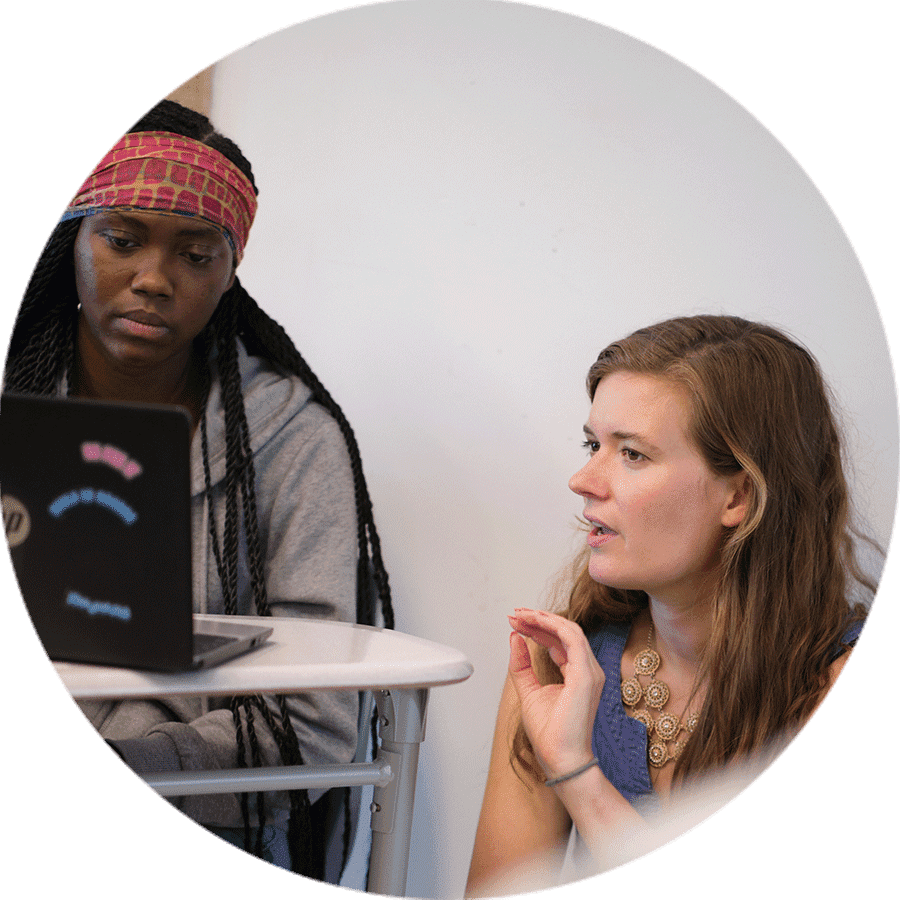The XQ Design Process

Inside this virtual toolkit, you’ll find everything you need to create a high school that truly meets the needs of students and prepares them for the future.
XQ Knowledge Modules
The XQ Knowledge Modules are step-by-step resources for designing a high school that’s excellent, engaging, equitable, and right for your community. They’re packed with expert advice, knowledge and resources, videos and podcasts, and downloadable planning tools.
Each module walks you through an element of high school design and helps you ground your work in the best thinking and research. The modules will also inspire you with examples of the great things happening in XQ schools and in communities and organizations around the country.
The 13 modules are divided into three phases: Discover, Design, and Develop.
![students together]() Discover
DiscoverStart by learning all you can about local young people, the challenges they face in the future, and how they learn best. If you’re redesigning an existing school, take a close look at how well students are doing today and begin to explore what it will take to transform learning for every student.
![student smiling]() Design
DesignWith what you learned in Discover as background, you’ll move on to articulate a vision for your new or redesigned school. You’ll create an ambitious design that covers your school’s mission, approach to teaching and learning, strategies to ensure student voice and agency, and ideas for engaging partners to enhance the student experience.
![teacher smiling]() Develop
DevelopThis is the phase when your team will move from Design to practical planning. You'll map out the details in areas from staffing, training, and assessment to governance and finance. Think through how you’ll make the most of resources like time, space, and technology. And get prepared for the challenges of implementation.
XQ Learner Outcomes
Keep your eye on the ultimate goal: developing XQ Learners—students who are deeply engaged in their own learning and fully prepared for all that the future has to offer. Use these goals as a blueprint for your work as you imagine how deep, rigorous, and interconnected learning really needs to be.
![hand holding a science beeker]() Masters of all fundamental literacies
Masters of all fundamental literaciesBuilders of the academic core necessary for college, career, and life; critical readers; compelling writers; mathematical and numeric thinkers; data and visual thinkers
![student smiling]() Holders of foundational knowledge
Holders of foundational knowledgeCurious people who are knowledgeable about the world. Its history and culture. Its sciences and underlying mathematics. Its biology and cultural currency; engaged participants who are key to creating a more just and functional democracy—who participate fully in all America has to offer
![student writing with a pencil]() Original thinkers for an uncertain world
Original thinkers for an uncertain worldSense-makers—dealing with conflicting knowledge; generative thinkers—creating many ideas in ambiguous and new situations; creative thinkers—reframing, imagining, and seeing problems from different perspectives
![teacher smiling]() Generous collaborators for tough problems
Generous collaborators for tough problemsSelf-aware team members who bring their strengths; talent-seekers who find the expertise of others; essential co-creators—because of what they bring, and how they show up; inquisitive world citizens who seek out—and respect—diversity and diverse points of view
![student listening]() Learners for life
Learners for lifeSelf-driven, self-directed; curious learners—about themselves, and the world; inventors of their own learning paths, careers, and lives
Analyze
Step 1 – Research
Review the XQ Learner Goals with your team.
- Break into five groups and assign each group a Learner Goal.
- Ask: Why is that goal especially important for young people’s future? How does it connect with other goals? Spend 10-15 minutes developing your argument.
Step 2 – Reflect
- Now come back together and give each group 3-4 minutes to make their case. Make your arguments persuasive and passionate! Note the most compelling points about each Learner Goal.
- Ask yourselves, What learning experiences can we create that will enable students to grow as XQ Learners?
XQ School Design Principles
Ground yourself in the XQ School Design Principles. Treat them as building blocks for the vibrant, engaging high schools your students need and deserve. Work with your team to consider how to design a school that embodies all these principles in a forward-thinking, integrated way.
![student holding flowers]() Strong mission and culture
Strong mission and cultureA unifying set of values and principles that provide common purpose, express belief in the potential of every student, and define every aspect of a school
![student smiling]() Meaningful, engaged learning
Meaningful, engaged learningInnovative approaches to curriculum and teaching that use real-world, interdisciplinary learning experiences to enable students to develop and apply deep content knowledge and complex skills
![student and teacher]() Caring, trusting relationships
Caring, trusting relationshipsConsistent emphasis on truly getting to know students, both inside and outside the classroom, and on building positive relationships among students and between students and adults
![student raising their hand]() Youth voice and choice
Youth voice and choiceAn approach to teaching, learning, and an overall school culture that focuses on giving all students opportunities to build their identities as learners and develop the capacity for agency and autonomy
![student smiling holding a project]() Smart use of time, space, and tech
Smart use of time, space, and techNon-traditional, flexible uses of time, technology, space, place, financial resources, and roles to increase the effectiveness of teaching and learning
![students and teacher together]() Community partnerships
Community partnershipsPowerful partnerships—with community and cultural institutions, business and industry, higher education, nonprofit organizations, and health and service providers—that provide support, real-world experiences, and networking opportunities for students, enabling them to envision and set goals for the future
Analyze
Step 1 – Research
Look more deeply at the XQ School Design Principles and think about what they mean for your ultimate school design.
- Break into six groups and assign each group a Design Principle.
- Ask: Why is it important to be thoughtful about applying this principle? How bold should we be? Spend 10-15 minutes developing your argument.
Step 2 – Reflect
- Give each group 3-4 minutes to present. Why is this Design Principle the one that matters most? Note the most compelling points about each Design Principle.
- Ask yourselves, how might this Design Principle show up in our new or redesigned school?














